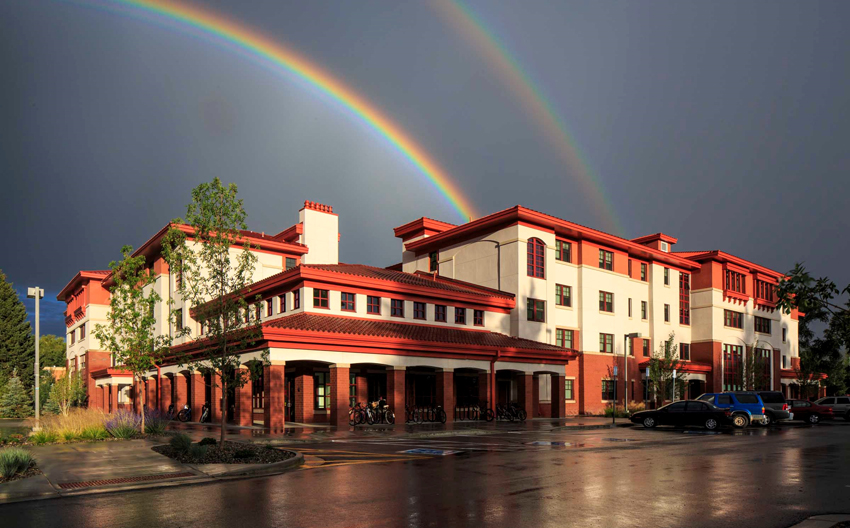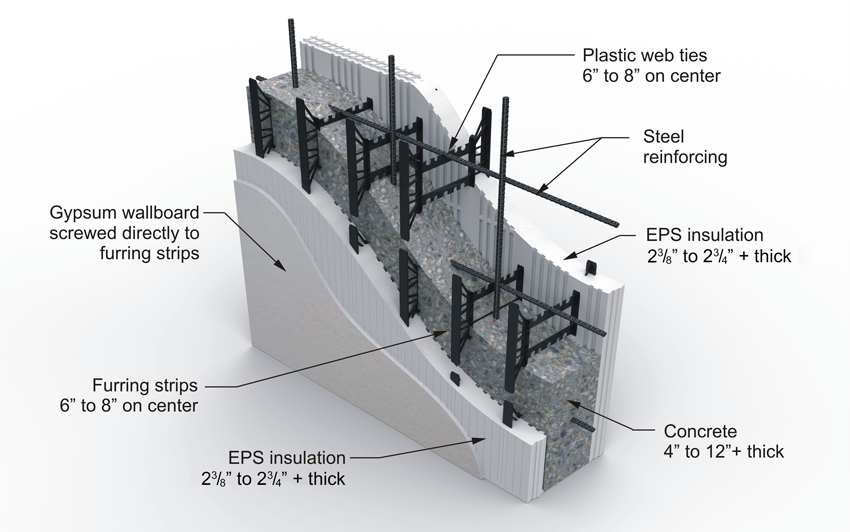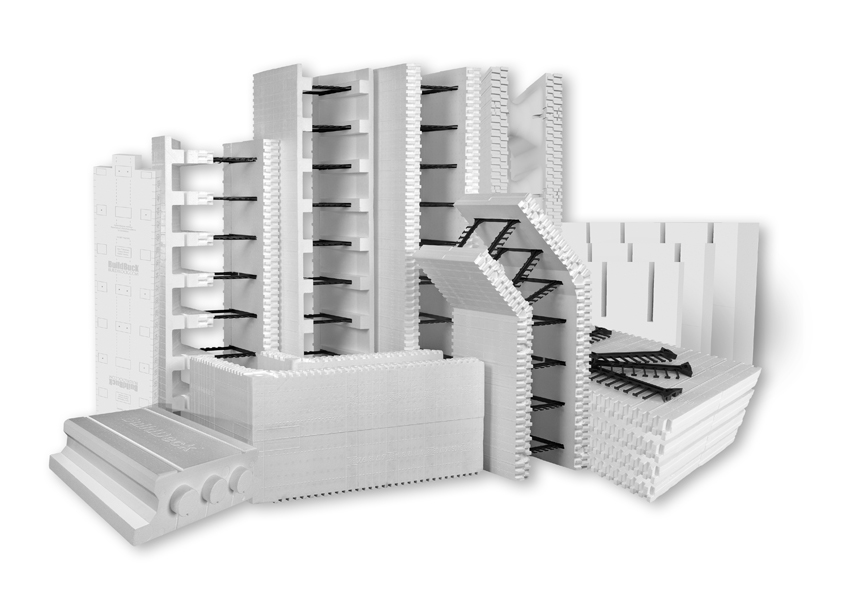Making the Business Case for Building with Insulated Concrete Forms: Energy, Safety, and Savings
Learning Objectives:
- Identify the economic benefits of building multifamily projects with insulated concrete forms (ICFs), including first cost and long-term value.
- Define the basic design criteria and construction elements of structures built with ICFs for multifamily residential projects.
- Explain how ICF construction can benefit the health, safety, and welfare of occupants in multifamily buildings.
- Evaluate the energy-efficiency, disaster-resilience, and noise-mitigation properties of ICFs.
Credits:
This course is approved as a Structured Course
This course can be self-reported to the AANB, as per their CE Guidelines
Approved for structured learning
Approved for Core Learning
This course can be self-reported to the NLAA
Course may qualify for Learning Hours with NWTAA
Course eligible for OAA Learning Hours
This course is approved as a core course
This course can be self-reported for Learning Units to the Architectural Institute of British Columbia
Developers live by two rules: minimize cost and minimize risk. There is a common misconception that building with concrete is more expensive than wood frame. But the reality is that concrete building systems such as insulated concrete forms (ICFs) have made concrete construction competitive on a first-cost basis and more profitable in the long run because of their energy cost savings, lower insurance costs, and reduced tenant turnover.

Photo courtesy of Design West Architects
The Student Apartments at Western State Colorado University were built with insulated concrete forms (ICFs) to withstand high altitudes and severe winter weather.
With softwood lumber prices rapidly increasing and concrete prices remaining stable, more developers are choosing to build with concrete. In addition, increased risk from structure fires, along with risks from natural disasters such as hurricanes, tornadoes, and wildfires, makes concrete the material of choice for life safety and reducing long-term costs. This results in a long-term investment strategy for apartments, condos, hotels, dormitories, and long-term care facilities.
The Calvert Lancaster apartment building in East Harlem, New York City, is an example of ICFs being able to withstand a disaster, saving lives and protecting long-term investments. In 2014, a natural gas explosion in the neighborhood leveled two 5-story apartment buildings and shattered the windows of structures in the surrounding block. Eight people were killed and 70 others injured.
Immediately next door to the explosion was the four-story Calvert Lancaster building. Despite being situated just inches from the blast, no one in the building was harmed, and all of the occupants managed to evacuate safely.
Curtis + Ginsberg Architects designed the building using ICF construction. The exterior walls were “formed by pouring concrete in a rigid foam form framed with steel rebar.” Curtis + Ginsberg Partner Mark Ginsberg says, “There were only a few cracks in the concrete—which is remarkable considering the impact of the explosion. The ICFs facing those two buildings got a little charred but did not burn.”1
The 6 to 8 inches of concrete provided the building with a fire break, and the New York Building Department informed owner Steve Bluestone that amazingly, “there was no structural damage at all.” There was also no damage to the cellar of the building where the boiler, hot water heater, laundry equipment, water booster pump, and fire pump were located.2

Photos courtesy of Steve Bluestone
The Calvert Lancaster apartments in East Harlem, New York, survived a gas explosion in the building right next door.
Defining Insulated Concrete Forms
ICFs combine two building products: reinforced concrete for strength and durability, and expanded polystyrene (EPS) insulation for energy efficiency. ICF walls are made up of two layers of rigid insulation held together with plastic ties to form ICF units with a cavity in the center. The ICF units are stacked in the shape of the wall, reinforcing steel is added into the form cavity, and then concrete is placed into the form. The result is a reinforced concrete wall with a layer of insulation on each side. What makes ICFs different than traditional concrete construction is that the forms remain in place after the concrete is cured to provide thermal insulation. The combination of reinforced concrete and insulation provides an ideal load-bearing wall, thermal envelope, fire barrier, and sound barrier.
ICF wall systems have been used for bearing-wall buildings ranging from single-story to high-rise buildings more than 20 stories tall and everything in between. In addition to ICF walls, there are also ICF floor and roof systems. The concept is similar in that the ICF form is made with rigid insulation to function as a one-sided form at the bottom surface. The forms are installed to span between concrete walls, reinforcing steel is placed, and then concrete is placed over the forms. The result is a reinforced concrete floor or roof with rigid insulation on the bottom.
There are examples of ICF buildings all over the United States and Canada, including single-family residential, multifamily residential, hotels, dormitories, assisted living facilities, offices, health-care facilities, manufacturing, and warehouse buildings. Schools built with ICFs are popular due to low- or net-zero energy use. Theaters are also trending toward ICF construction for superior sound attenuation. Because apartments, dormitories, senior residences, and hotels and motels are typically revenue-generating properties, ICFs are particularly well-suited for this type of construction.
What makes ICFs so attractive for multifamily construction is that they are cost competitive with wood frame. A building owner gets a building that is more disaster resilient and energy efficient at or nearly the same cost. Fire safety is a key element of multifamily construction since occupants sleep in these buildings and are often challenged to evacuate during a fire. Concrete walls and floors provide the fire resistance needed not only to allow occupants to evacuate but also contain the fire within a single unit, imposing less risk on firefighters and property.

Image courtesy of Logix
Shown is a typical insulated concrete form (ICF) wall detail.
ICF Wall Systems
The efficient construction process is what sets ICF building systems apart from other building systems, such as wood frame, steel frame, and masonry construction. ICF construction can help contain construction costs and reduce construction time because of the inherent efficiencies of the installed assembly, which serves nine functions:
- Concrete form (that stays in place)
- Thermal barrier
- Air barrier
- Moisture barrier
- Fire barrier
- Sound barrier
- Substrate for running utilities
- Substrate for attaching finish materials
- Reinforced concrete structure
In other forms of construction, these functions are installed by several different trades, usually at a significant added cost. General contractors can realize a number of on-site efficiencies, including fewer trades, reduced crew size, and accelerated construction schedules. Because construction schedules are usually much shorter with ICF construction, the general contractor can finish the project both on time and within budget. This means that the building owner can put the building into service sooner, cutting short the financing costs and initiating a quicker revenue flow.
There are many different ICF manufacturers with similar ICF systems. The blocks range in size from 48 to 96 inches long and 12 to 24 inches high depending on the manufacturer. The most common configuration of an ICF unit is made up of two layers of 23⁄8- to 23⁄4-inch-thick EPS insulation spaced 4, 6, 8, 10, or 12 inches apart depending on design requirements. The most common spacing is 6 or 8 inches for most low- to mid-rise buildings, but for taller buildings, taller walls, or exceptionally large loadings, thicker walls are necessary. For simplicity, ICFs are generally called out by the width of the cavity; hence, an ICF with a 6-inch cavity is called a 6-inch ICF and an ICF with an 8-inch cavity is called an 8-inch ICF.
ICF manufacturers have a variety of ICF blocks to accommodate any design condition and offer thorough technical support, including design manuals, design details, engineering support, and test reports needed for commercial construction, including fire, energy, and noise. They have special components, including straight blocks, corner blocks, brick ledges, angled blocks, curved blocks, and half-height units, minimizing the need for field modifications and further reducing construction time.
Another benefit of ICFs is that construction projects can continue through the coldest and hottest weather because of the insulating quality of the ICF forms. This means that concrete will continue to gain strength within the protective formwork despite freezing conditions and not overheat during extreme summer conditions.
Matt Green, the vice president of KB Walker based in Waukesha, Wisconsin, discusses the ability to build with ICFs in winter conditions. “One of the biggest things you can look at with ICFs in terms of hard numbers is pouring concrete in winter conditions,” he says. “In climate zones 4 and up, there are going to be temperatures below which concrete cannot otherwise be poured. However, with ICFs, we have poured concrete in temperatures as low as 5 degrees Fahrenheit.”
Rather than waiting for spring to begin construction, specifiers can leverage the insulating properties of ICFs to begin building at any time of the year.

Image courtesy of BuildBlock
Shown are ICF wall and floor components.
















